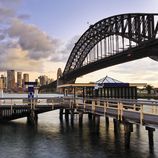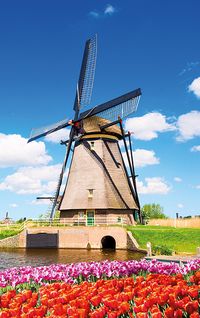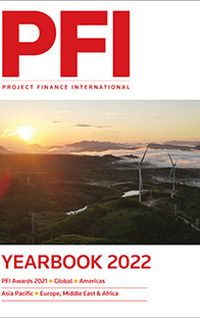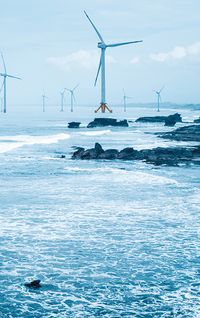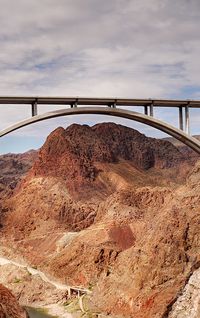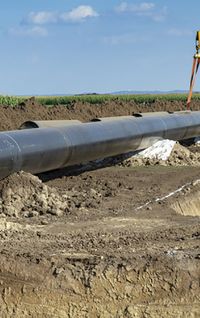The UAE’s renewables and sustainable infrastructure developer Masdar has doubled its power portfolio in 2021, with big tender wins and a number of other memoranda and project agreements. PFI spoke with the company’s CFO, Niall Hannigan, and executive director Fawaz Al Muharrami, about an impressive year and the company’s lofty ambitions for the future. By Peter Collins.
Uzbekistan, Armenia, Azerbaijan, Turkmenistan, Iraq, Ethiopia. Until recently, these were not exactly countries many in the power and renewables sectors would consider a viable destination for investment. Unless you asked Masdar.
The company has spent much of 2021 expanding into new markets – notable achievements in its core markets notwithstanding – on its way to doubling its clean energy portfolio from two years ago to more than 11GW.
Much of the fanfare, and megawatts, have come through Uzbekistan and the government’s massive push to liberalise its power sector and procure vast quantities of new, mostly clean power. Masdar made it two for two in Uzbek solar tenders this spring, having been selected in the ADB-backed Sherabad tender to develop a 457MW project and the IFC-backed Scaling Solar 2 tender to develop 440MW.
The Sherabad scheme secured a tariff of US$0.018045 per kWh – which stood as a record for several days only to be beaten by the company’s own bid in Scaling Solar 2. The IFC tender was split into two projects, both won by Masdar, which will develop a 220MW scheme in Jizzakh for US$0.01791/kWh and another 220MW in Samarkand for US$0.01823/kWh.
Naturally, the developer is in the running for the next iterations of the tender programmes – which released request-for-qualification (RFQ) documents in September (Scaling Solar 3) and October (Sherabad 2).
In Uzbekistan as well, the developer is targeting Q1 to close the financing of its 500MW Zarafshan onshore wind farm. Capex is US$600m and the roughly US$420m debt facility will be provided by IFC, EBRD, ADB and JICA, plus potentially FMO as a B-lender over a 20-year door-to-door tenor. Sponsors are looking at an ECA-covered commercial tranche with Etihad Credit Insurance (ECI) – the UAE's federal export credit agency – providing comprehensive cover for a portion of the debt. However, it will be able to get the deal over the line with or without one, as it has received plenty of interest from multilateral and development banks.
On top of it all, Masdar has already signed an implementation agreement with Uzbek authorities to expand Zarafshan to 1.5GW.
Meanwhile, development finance institutions are lining up to finance a 200MW solar photovoltaic scheme in Armenia, with financial close expected in H2 2022. The Abu Dhabi Fund for Development (ADFD) is set to provide 49% of the debt on the US$174m scheme, while the EBRD, ADB, and JICA will split the remaining 51%.
Also targeted for financing mid-next year is a 200MW solar scheme in Azerbaijan backed by ADB, EBRD, FMO and Proparco.
While it is still early days, memoranda of understanding have also been signed in Iraq and Turkmenistan. The Iraq agreement – more concrete than Turkmenistan's – swill see five solar PV schemes with a combined 1GW of capacity built around the country. The portfolio comprises a 450MW scheme in the southern Dhi Qar governate, a 250MW scheme and a 100MW scheme in Ramadi, and two more 100MW schemes in Mosul and Amarah.
In Ethiopia, agreements were signed in March for the company to develop up to 500MW in the country, beginning with a 300MW first phase originally expected to be operational in 2022. However, due to on-going political unrest in the country, Masdar has slowed things down while it awaits further clarity.
With this year’s performance, Masdar has demonstrated its willingness to be a first mover into newer, riskier geographies, where regulatory frameworks and offtake structures must be designed from scratch in collaboration between governments, development banks and sponsors. All this amid a global pandemic.
***
“It’s been a challenging year, albeit a very positive one for us,” Niall Hannigan, CFO for Masdar, told PFI, “Covid is still with us and isn’t going away.
“Opportunities were still there during the pandemic and we continued to grow. What the whole experience demonstrated was the resilience of the sector, though of course we weren’t completely immune,” he added.
Like most international power developers, Masdar experienced supply chain issues and delays and short-term challenges with offtaker payments. But for Hannigan, the novel coronavirus did not necessarily present novel challenges.
“During Covid we saw the manifestation of certain risks, but in the main these were risks that had already been contemplated, and where they weren’t contemplated, they were addressed through close collaboration with our partners," he said, referring to its 200MW solar project in Jordan in which un-contemplated risks were solved with relatively little hassle. Jordan’s state power utility NEPCO agreed with Masdar – and other generators - in early 2020 to temporarily reduce payments by 25%, with NEPCO to make up payment differences at a later date.
“How was that addressed? By industry, development banks and government authorities coming together and recognising it was a unique time and agreeing a payment plan for the offtaker that was acceptable to all parties,” enthused Hannigan, adding that the solution devised in response to an unprecedented global pandemic meant “the project is now even less risky than it was”.
Other illustrative examples include securing PPA extensions during Serbia’s state of emergency and helping tenants navigate cashflow issues in Masdar City – its sustainable urban development and technology and innovation hub. In these sectors, as most developers will agree, it is important not to panic in the face of short-term issues – even society-altering global health crises.
“We’re a long-term investor,” said Hannigan, “and this is a utility play, low risk, long-term stable cashflow. So, if the offtaker has a challenge, you work with them.”
This long-term thinking has informed their strategy for the latest challenge of 2021 – the Chinese solar panel crisis. Fuelled by an energy shortage and amid rising costs – silicon metal surging 300% between August and October – manufacturers in China, the world’s largest producer of solar panels, have had to slash output.
For developers, it has been a situation to monitor, to say the very least.
“Supply chain is probably the largest risk out there to the sector,” said Hannigan. “If you look at the PV panel market, around 80% is from China irrespective of who you buy from,” he added.
“That has had an impact in the last six months and how long it will last is something we are working out.”
“Of course it has had an impact on the industry and caused a major disturbance in the market,” said Masdar's executive director Fawaz Al Muharrami.
Accordingly, Masdar is seeking extensions for most of the solar photovoltaic projects it secured this year and talks are under way for a number of solar schemes between Masdar, its EPCs and the relevant authorities under claims of force majeure.
However, the company is banking on prices stabilising again by Q1 next year, with most extensions being requested for a few months at the most.
***
As well as new geographies, Masdar has also diversified into new technologies, notably its 145MW Cirata floating solar project in Indonesia – incidentally the company’s first investment in South-East Asia.
Masdar and project partner PT Pembangkitan Jawa Bali Investasi (PJBI) signed a signed a US$112.3m 15-year project loan in June. SMBC, Societe Generale and Standard Chartered split the ticket equally with margins said to be between 250bp and 300bp.
The project is being built on a 62km2 artificial reservoir for the 1.8GW Cirata hydropower scheme – owned by a subsidiary of PJBI – about 100km south-east of Jakarta.
“It wasn’t an easy ride,” said Al Muharrami. "It always takes time and effort to develop a first utility-scale floating PV project. But we managed to close, and the project will be an anchor for us for future development in the country.”
Al Muharrami cited Cirata as the most illustrative project of Masdar’s year and it is easy to see why: a new technology, a new market, and a bankable structure capable of attracting major lenders on good terms.
***
Indeed, besides the obvious success in procurement and some key project financings – including the 300MW REPDO2 solar schemes in Saudi Arabia in Q1 – it has also been an important year at the corporate level.
At the end of September, Masdar was rated A2 by Moody’s and A+ by Fitch, a result that Hannigan said “recognised the strength and diversified nature of our business as a whole”. Moody's said the company benefits from the track record and strong portfolio of tenants at its Masdar City real estate site, its diversification across renewables and real estate, the non-recourse nature of its debt, and support and equity injections from the government and Masdar's direct owner Mamoura, which is part of Mubadala.
“The rating opens up avenues to access global capital markets going forward and tap into new collaborations and investments – for me this is a game changer,” said Hannigan.
One may ask why a company already on first name terms with the world’s biggest commercial banks views its rating – glowing as it is – as so important. Simply, it’s all about improving the bottom line in an increasingly competitive sector.
“The flow of capital to renewables is enormous. There’s no shortage of funding out there,” said Hannigan.
“We have a clearly defined strategy – one pillar of which is to only invest in bankable projects. In developing markets, that’s more challenging, but it’s achieved because there is heavy support from, and close collaboration with, DFIs,” he explained.
“But the sector is becoming more competitive and as a developer you want to be able to tap into a broader pool of liquidity to try and secure more attractive terms. At the end of the day, we’re a commercial organisation targeting appropriate risk-adjusted returns."
Next to the rating, one of Masdar’s biggest achievement this year has been the launch of its Real Estate Investment Trust (REIT), a fund that owns and operates incoming-producing properties and distributes to the unitholders at least 80% of its audited annual net income. The Masdar Green REIT’s mandate is to invest in sustainable real estate assets within Masdar City. It is being run together with Middle Eastern asset manager Emirates NBD Asset Management.
Initially seeded with four assets worth Dh1bn, Masdar will launch and close a Dh200m funding round before the year is out and expects it to grow to Dh2.5bn, which would make it the largest REIT in the world and the only one focused on sustainable real estate.
According to Hannigan, the UAW’s first "green" REIT “will open up opportunity to recycle capital, and provide opportunity for the investment community”, allowing third-party investors to develop assets in Masdar City and monetise them to the REIT.
Last but not least – though certainly most recent – is the news that UAE state-owned Abu Dhabi National Energy Company (TAQA) and Abu Dhabi National Oil Company (ADNOC) have set out a plan to take major stakes in Masdar’s renewable energy and hydrogen businesses.
TAQA will take 43% of the renewable energy business and 24% in the hydrogen business, while ADNOC will do the opposite. Mubadala will retain 33% stakes in each business and maintain full ownership of Masdar City. The state-owned companies want to more than double power capacity to 50GW by 2030 from 23GW.
Masdar has set itself up for a busy financing year in 2022 – its entire Uzbek portfolio is to be financed next year, as are projects in Armenia, Azerbaijan and beyond. Its REIT will be active in sustainable real estate and contribute to the growth of Masdar City, over which it retains full control.
And despite having so much on its plate, the developer seems to want more and more.
“The opportunity is immense,” said Hannigan, “and our ambition is to at least double our portfolio again over the next two to three years.”
To see the digital version of this report, please click here
To purchase printed copies or a PDF of this report, please email gloria.balbastro@lseg.com

